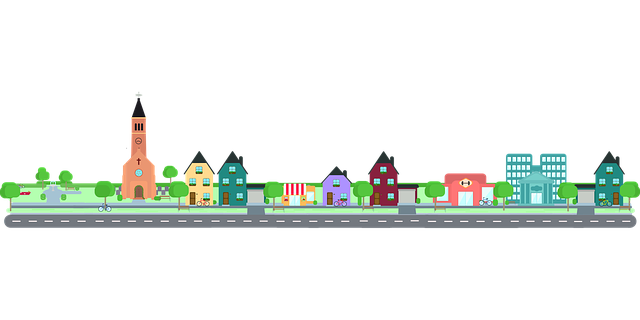
Community Connections

Overview
In this activity, second-grade students will connect virtually with one or more community members such as police chief, city manager, librarian, or mayor in order to discuss their roles and responsibilities. Students will keep track of what they learn in order to create a poster describing the person and everything he/she does to help the community. Once completed, the posters will be shared with shared virtually with the community member.
This activity will take three 20-minute class periods to complete if the students create a poster.
Learning Objectives
Students will:
- Be able to develop interview questions to ask a community member.
- Be able to describe how local government affects the lives of its citizens.
- Be able to effectively engage in a video conference / virtual interview.
- Be able to ask for clarification and further explanation as needed about the topics and texts under discussion.
- Be able to compile key ideas from the video conference / virtual interview into a digital poster.
Vocabulary
Vocabulary Words:
-
Video Conference: A video conference is communicating with other participants in different locations in such a way that you can hear and see them.
-
Virtual Interview: A virtual interview is asking another individual a series of questions through a video conference connection.
Pre-planning
To prepare for this lesson:
-
The students will need prior experience working within Google Slides or PowerPoint.
-
The teacher will arrange for a time to connect virtually with a local government official.
-
The teacher will need to be familiar with the collaboration tool they choose to have students use (e.g., Google Meet, Zoom, Skype).
-
The teacher will need to schedule video-conferences with several individuals affected by bullying (e.g., parents, victims of bullying, school principals, reformed bullies, etc.).
-
Optional: Download the Poster Template 8.5”x11”. Make copies of the template for the students to be able to edit it. (Go to File>Make a Copy)
Note:
- Children should be monitored by an adult whenever engaging in a video-conference. Teachers should check with their district technology leader prior to engaging in a video-conference.
Accommodations
- See Accommodations Page and Charts on the 21things4students.net site in the Teacher Resources.
-
Students who need extra support may be instructed to use the following template.
Steps
Directions for this activity:
-
The teacher will inform the students about the approaching video conference / virtual interview.
-
Students will work in small groups to brainstorm a list of potential interview questions to ask the guest.
-
As a whole group, the class will develop a master list of interview questions.
-
Students will volunteer to ask the guest a specific question.
-
During the video conference / virtual interview, students will keep track of the guest’s answers.
-
After the interview, students will create a poster showcasing the position/role/job of the individual interviewed using Google Slides or another presentation tool. Share the copied versions of the Poster Template 8.5”x11” for the students to edit.
Optional:
- These posters may be virtually shared with the guest.
- Students will share their posters with the class and/or a small group.
- Rather than having every student involved in one single video conference / virtual interview, small groups might be assigned specific community members (each group would interview a different community member).
Assessment Options
Different options for assessing the students:
- Observations
- Check for understanding
- Students will be informally assessed during the interview on the following:
- Be able to develop interview questions to ask a community member.
- Actively participated in a video conference / virtual interview (good listening skills)
- Students posters will be assessed using the following criteria:
- The student compiled key ideas from the video conference / virtual interview into a digital poster.
- The student described how local government affects the lives of its citizens
- The student demonstrated creativity and care when creating the poster.
MITECS COmpetencies & ISTE STANDARDS
MITECS: Michigan adopted the "ISTE Standards for Students" called MITECS (Michigan Integrated Technology Competencies for Students) in 2018.
Global Communicator
7a. Students use digital tools to connect with learners from a variety of backgrounds and cultures, engaging with them in ways that broaden mutual understanding and learning.
7b. Students use collaborative technologies to work with others, including peers, experts or community members, to examine issues and problems from multiple viewpoints.
Devices and Resources
Device: PC, Chromebook, Mac, iPad
Browser: Chrome, Safari, Firefox, Edge, ALL
App, Extension, or Add-on:
Google Slides, Google Meet, Skype, Zoom
Websites:
Community Member Poster Template
CONTENT AREA RESOURCES
ELA
-
CCSS.ELA-LITERACY.SL.2.1.B
Build on others' talk in conversations by linking their comments to the remarks of others. -
CCSS.ELA-LITERACY.SL.2.1.C
Ask for clarification and further explanation as needed about the topics and texts under discussion. -
CCSS.ELA-LITERACY.SL.2.2
Recount or describe key ideas or details from a text read aloud or information presented orally or through other media orally or through other media.
Integrated Arts
Videoconference with an author.
Science
Videoconference with a scientist.
Social Studies
Students will describe how local government affects the lives of its citizens by learning more about the roles of local government officials (e.g., city manager, city council member, police chief, mayor, etc.).
CREDITS
This task card was created by Jean Smith, Van Buren Public Schools, February 2018. Updated November 2021.


